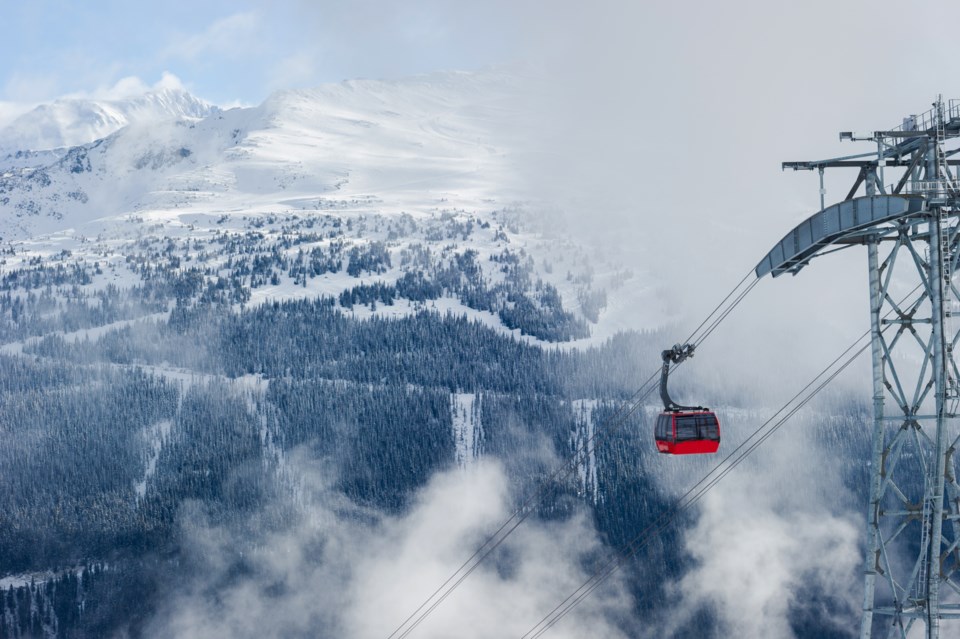As Christmas draws near, close to 2 million Canadians are reportedly facing a not-so-nice gift from the federal government in the form of Canada Emergency Response Benefit (CERB) clawbacks.
According to the feds, about 1.8 million Canadians received debt notices related to CERB payments they didn’t qualify for (of an estimated 9 million Canadians in total to receive the COVID benefit).
At a minimum of $2,000 per recipient (a conservative estimate), that’s about $3.6 billion in payments sent to people who didn’t qualify.
Randy Helsdon, a glass worker from London, Ont., is among those who received the debt notices.
All the information he received at the time was that the money came without strings attached to help people through the pandemic, Helsdon recently told CBC News.
“If we were told we’d have to pay it back, I would have just sent it back to them immediately,” he said, adding that the debt notices told him he would have to pay back $2,000, and could do so in instalments of $200.
“With the cost of groceries and everything, I don’t have an extra $200 a month right now,” he said.
“All I’m asking is to continue to let us try to tread water instead of pushing us under. I’m hoping they just go back and cancel the repayments.”
Let’s be clear: $3.6 billion is a whole lot of money. But it pales in comparison to the full scope of Canada’s pandemic misspending.
A recent Auditor General’s report found a “minimum” of $27.4 billion in COVID payments went to those who were ineligible or actively scamming the system. Tack on $4.6 billion in confirmed government overpayments, and you’re looking at more than $32 billion in misappropriated funding.
As journalist Tristan Hopper pointed out in a Dec. 8 National Post article, for context, that is about one tenth of the $325-billion deficit Canada racked up in 2020 (and for a bit more context in the other direction, I had a small panic attack about a $140 fraudulent charge on my credit card this week).
So in the grand scheme of Canadian debt, $32 billion does not seem like much. But as Hopper points out, it actually constitutes the “largest misappropriation of government funds in the history of Confederation.”
Some of the things you could do with $32 billion, as listed by Hopper: build the Canadian Pacific Railway 18 times over; pay for an entire month of Canadian health-care; or buy every pipeline Alberta’s ever dreamt of.
In Whistler, it could also buy you Whistler Blackcomb—purchased by Vail Resorts in 2016 for $1.4 billion, which would be about $1.7 billion today—18 times over.
Or it could buy you every single assessed property in Whistler (total assessed roll in 2022 of $24.7 billion) while still leaving you about $7 billion in change.
Put another way, the federal government’s COVID misspending alone could buy you literally everything in Whistler, and you’d still have several billion in your bank account to fall back on.
So the scale of the spending (and misspending) is truly awesome. Its implications are not.
According to James Brander, a professor at UBC’s Sauder School of Business, Canada’s monumental COVID spending is a key factor in the inflation we’re now witnessing.
“Canada was very generous, and it had benefits, but it had costs as well,” Brander said.
In creating its COVID relief programs, the federal government and the Bank of Canada essentially “printed money” to send to beleaguered individuals and businesses to keep them afloat.
“So what happened was that we sent out all this money, but it didn’t correspond to increased production, so we basically had more dollars, more liquidity, chasing fewer goods, because we were working less, and that does create inflationary pressure,” Brander said.
“We’re paying for [that generosity] now. When you finance government activity by printing money, you end up causing inflation, and economists call that the inflation tax.”
There are of course critics who say Canada’s COVID bailouts were too generous, its dispersal of cash too flippant, and “that’s a reasonable point of view,” Brander said.
“But when you’re turning out money that quickly, trying to get it to people today … all kinds of money slips through the cracks, there is a fair amount of fraud, a fair amount of unintentional overpayments and so on, so of course that happens. It’s impossible for that not to happen when you have this crash program of sending out money.” Hence the current clawbacks.
And therein lies the tradeoff. Racking up legendary debt and driving inflation through the roof is obviously not good for anyone. But neither is allowing Canadians and their businesses to fail because we’re too sluggish offering relief due to fears of misspending or fraud.
Which begs the question: which hand would you rather have on the wheel?
“The Canadian government, I think, was the most generous, probably, of all the governments, and as a result, people, from an economic point of view, suffered less,” Brander said.
“So it is a tradeoff. But we are paying the price now.”
Where do we stand at the end of 2022? Canada’s debt-to-GDP ratio has gone from about 40 per cent pre-pandemic to 75 per cent today, “and that is uncomfortably high,” Brander points out.
“Canada had the capacity, basically, to get through a crisis, because its debt-to-GDP ratio was fairly low, by the standards of most other countries,” he said. “It’s now fairly high. We don’t have room for another crisis.”
Ultimately, Canadians will decide if the COVID misspending is unforgivable; the Liberals no longer fit to manage the public purse.
“In either case, we’re not in a catastrophic situation right now, but we’ve used up all our breathing space,” Brander said. “And it is time to get serious again about getting the fiscal house in order.”




